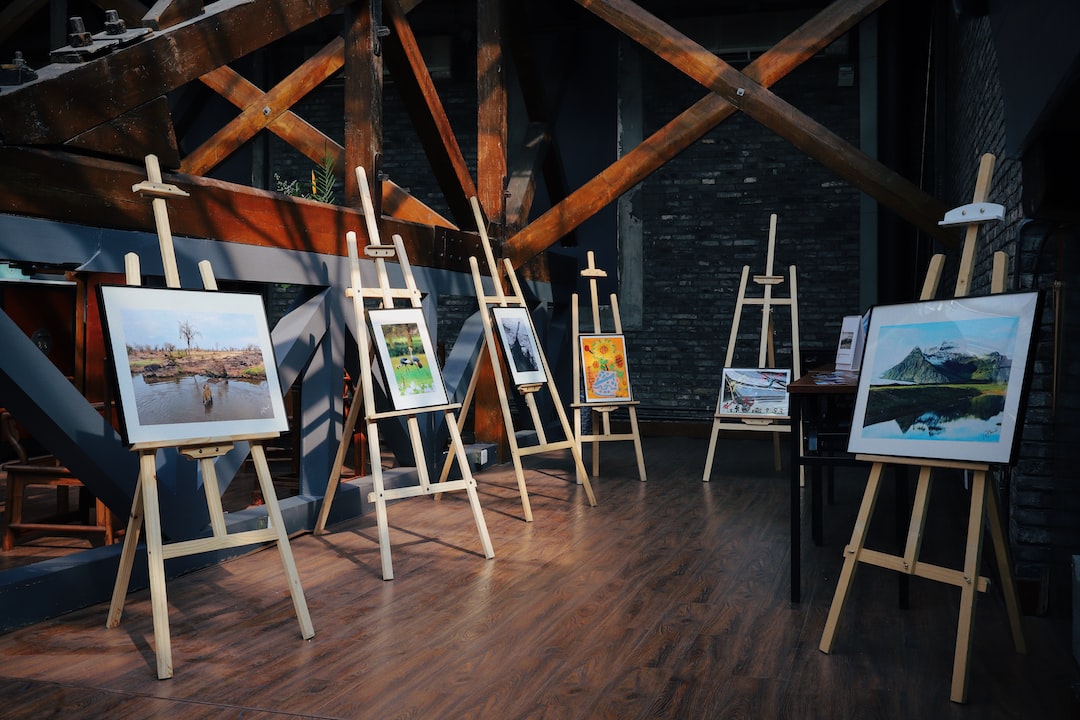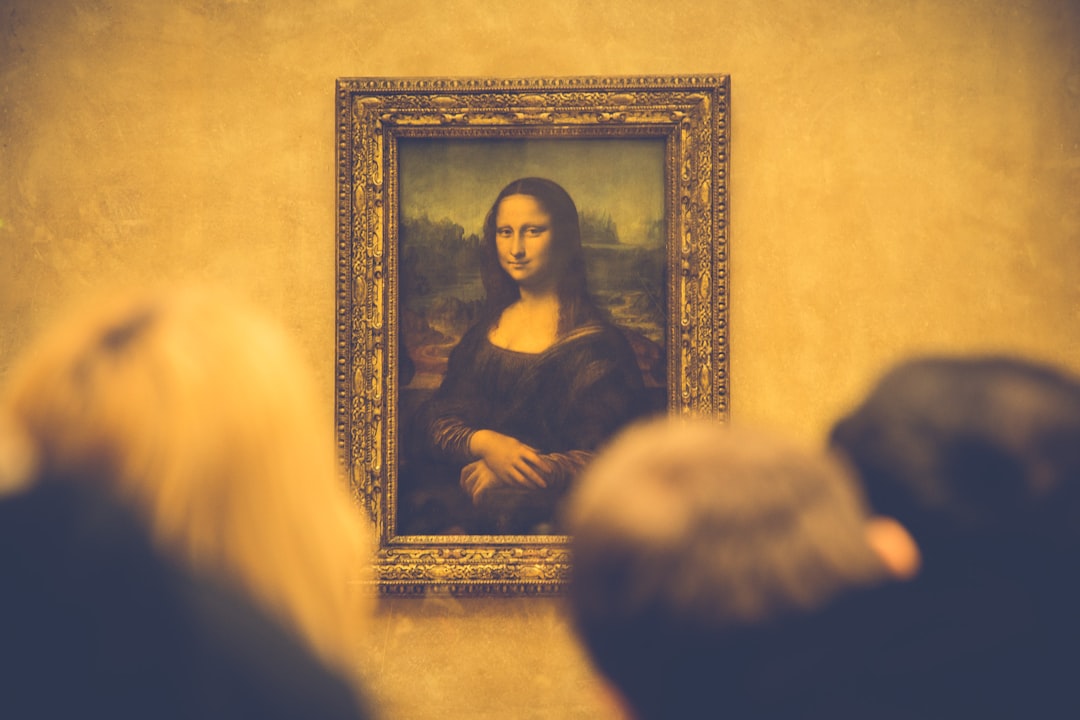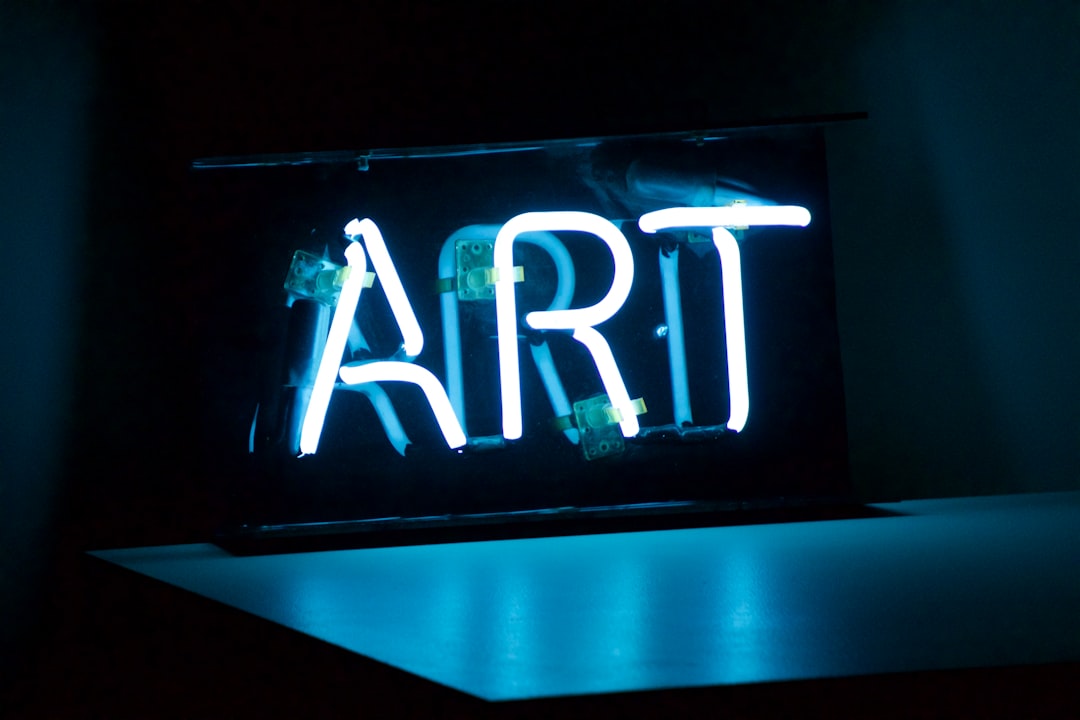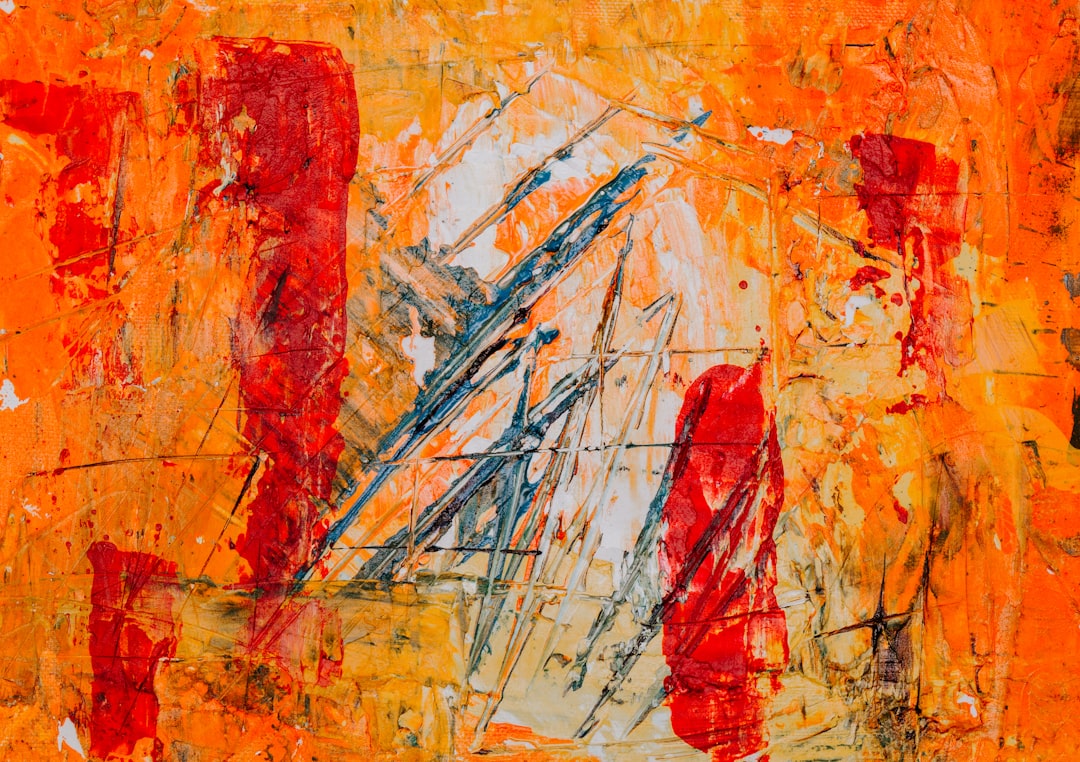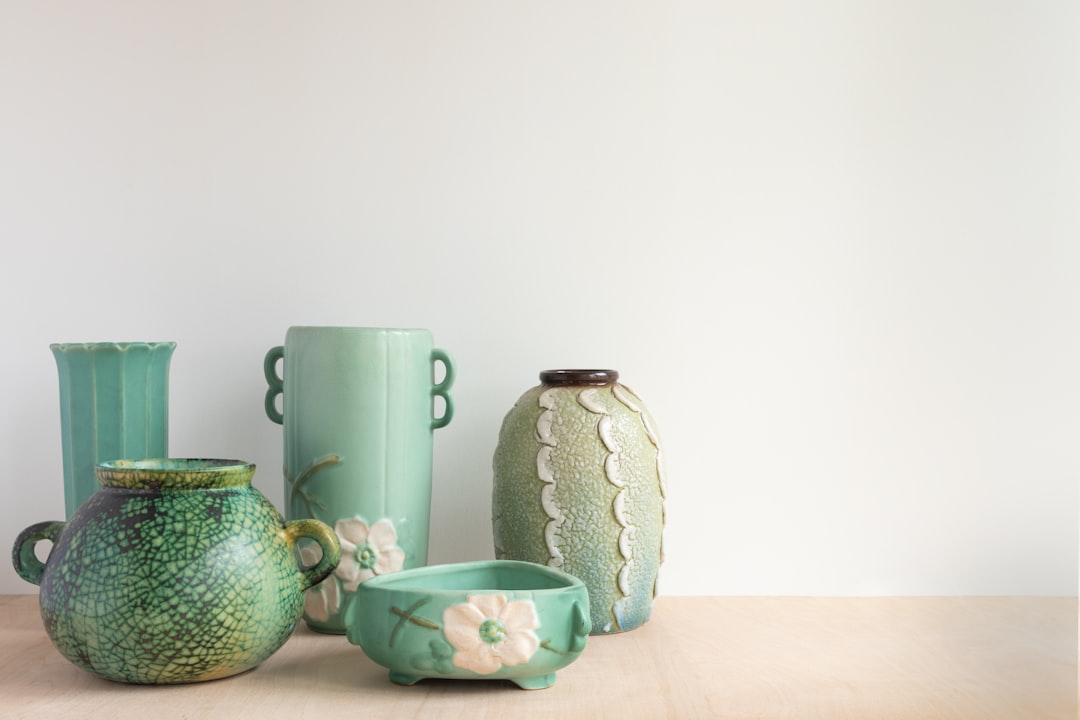Welcome to the fascinating world where art and technology converge! In this blog post, we will embark on a journey to explore the groundbreaking intersection of blockchain and art. Prepare to have your mind expanded as we dive into the innovative ways in which this emerging technology is revolutionizing the traditional art market.
For centuries, the art market has been dominated by galleries, auction houses, and intermediaries who determine the value and authenticity of artworks. However, the advent of blockchain technology has the potential to disrupt this age-old system, offering a decentralized and transparent platform for artists, collectors, and enthusiasts alike.
But what exactly is blockchain? In simple terms, it is a decentralized digital ledger that records transactions across multiple computers. It acts as an incorruptible and transparent record of these transactions, ensuring that information cannot be altered or tampered with. Initially developed for cryptocurrencies like Bitcoin, blockchain has now found its way into various industries, including the art world.
As we delve into the world of blockchain and art, let’s keep an open mind and embrace the possibilities that arise when technology and creativity converge. By the end of this post, you’ll gain a deeper understanding of how blockchain is transforming the art market and empowering artists, collectors, and galleries to redefine the boundaries of what’s possible.
So, grab a cup of coffee, settle into a comfortable spot, and let’s embark on this exciting exploration of the intersection of blockchain and art!
Understanding the Traditional Art Market
When it comes to the art world, tradition has always played a significant role. For centuries, artists and collectors have relied on established systems to buy, sell, and value artwork. Museums, galleries, and auction houses have acted as gatekeepers, determining what is considered “valuable” and what is not.
This traditional art market has its merits, of course. It has provided a platform for artists to showcase their work and has allowed collectors to invest in pieces they love. However, it is not without its flaws. The exclusivity and subjective nature of the traditional art market has often left artists feeling undervalued and underrepresented.
Additionally, the process of verifying provenance and authenticity in the traditional art market can be complex and time-consuming. While there are established methods and organizations dedicated to this task, the reliance on physical documents and trust in intermediaries can lead to issues of fraud and disputes.
But what if there was a way to address these flaws and create a more inclusive, transparent, and efficient art market? This is where blockchain technology enters the picture.
Blockchain, the distributed ledger technology that underlies cryptocurrencies like Bitcoin, has the potential to revolutionize the art world. By providing a decentralized and transparent platform, it can reshape the way we buy, sell, and value artwork.
Now, you might be wondering how exactly blockchain can be applied to the art market. Well, let’s dive deeper into this fascinating intersection between blockchain and art.
Well, let’s dive deeper into this fascinating intersection between blockchain and art.
Exploring the Intersection of Blockchain and Art
Welcome back to our blog series on the fascinating world of blockchain and art! In this section, we’ll delve into the exciting intersection where these two seemingly distinct realms converge. So, grab your virtual paintbrush and let’s explore the infinite possibilities that arise when art and blockchain join forces.
Ever since its inception, blockchain technology has been making waves across various industries, revolutionizing the way we conduct business, manage data, and even verify and authenticate digital assets. Now, it’s the art world’s turn to embrace this transformative technology. As artists, collectors, and galleries begin to dip their toes into the blockchain arena, a myriad of opportunities is emerging.
But what exactly does it mean for art to intersect with blockchain? Well, imagine a world where artists can protect their intellectual property rights, ensure the authenticity of their creations, and even receive fair compensation for their work, all thanks to the transparency and immutability provided by blockchain.
Traditional art markets have long faced challenges such as counterfeit artwork, opaque transactions, and the struggle to establish provenance. But with blockchain, these hurdles can be overcome. By recording each transaction and creating an unalterable digital trail, blockchain technology ensures that every step in an artwork’s journey is securely documented.
Imagine a painting being sold: instead of relying solely on trust and reputation, buyers and sellers can now authenticate the artwork’s origin, provenance, and previous owners through the blockchain. This process eliminates the need for intermediaries and enhances transparency, inspiring confidence in both artists and collectors.
Blockchain also introduces the concept of smart contracts into the art world, automating and enforcing the terms of agreements between artists, collectors, and galleries. These self-executing contracts enable artists to receive royalty payments every time their artwork is resold, ensuring they continue to benefit from the increased value of their creations.
Moreover, blockchain technology opens new doors for artists to reach a global audience and engage directly with art enthusiasts. By minting their artworks as non-fungible tokens (NFTs), artists can create unique digital assets that can be bought, sold, and owned securely on the blockchain. This paves the way for a whole new world of digital art, where artists can monetize their creations and connect with fans like never before.
The intersection of blockchain and art is a space filled with endless possibilities, encouraging creativity, innovation, and collaboration. As artists and collectors explore this new frontier, they are discovering novel ways to showcase, trade, and interact with art, transcending geographical boundaries and traditional limitations.
So, whether you’re an established artist looking to protect your legacy, a collector seeking to build a secure and diverse art portfolio, or a gallery aiming to provide a seamless experience to your patrons, the intersection of blockchain and art holds immense promise for all.
In the next section of our blog series, we’ll dive deeper into the specific benefits that blockchain brings to the art world. Get ready to be amazed by the ways in which this technology is reshaping the future of the art market!
The intersection of blockchain and art is a space filled with endless possibilities, encouraging creativity, innovation, and collaboration.
Benefits of Blockchain in the Art World
Blockchain technology has revolutionized numerous industries, and the art world is no exception. Its decentralized and transparent nature offers a plethora of benefits that have the potential to transform the way we create, buy, and sell art. In this section, we will delve deeper into the advantages that blockchain brings to the art world and how it is reshaping the traditional art market.
One of the key benefits of blockchain in the art world is the elimination of intermediaries. In the traditional art market, artists often rely on galleries, agents, and auction houses to showcase and sell their work. These intermediaries, although important in certain aspects, can limit an artist’s reach and often take a significant cut of the profits. With blockchain technology, artists can directly connect with collectors and enthusiasts, creating a more direct and transparent relationship. This not only allows artists to retain more control over their work but also opens up new opportunities for emerging artists who may have previously struggled to break into the industry.
Another advantage of blockchain in the art world is the ability to authenticate and verify the provenance of artwork. The decentralized nature of blockchain ensures that records of ownership and transactions are permanently recorded and cannot be altered. This means that buyers can have complete confidence in the authenticity and ownership history of an artwork. This has been a long-standing challenge in the art market, as forgeries and fraudulent practices have plagued the industry for years. Blockchain technology offers a solution to this problem, bringing a sense of trust and security to art transactions.
Additionally, blockchain provides artists with a more equitable system for royalty payments. In the traditional art market, artists often receive a one-time payment for their work, even if its value increases significantly over time. With blockchain-based smart contracts, artists can embed royalties into their artwork, ensuring that they receive a percentage of the resale price whenever it changes hands. This introduces a sustainable income stream for artists and acknowledges the ongoing value their creations hold in the market.
Furthermore, blockchain technology has the potential to democratize the art world by making it more accessible to a global audience. Traditionally, art has been confined to physical galleries or auction houses, limiting its reach to a select few. However, with blockchain and non-fungible tokens (NFTs), art can be digitized and easily shared and traded across borders. This creates opportunities for artists to gain recognition on a global scale and for art enthusiasts to discover unique pieces from around the world.
Lastly, blockchain technology encourages creativity and experimentation in art. Artists can leverage blockchain to create interactive and immersive experiences that were previously unimaginable. Through the use of smart contracts and decentralized applications (dApps), artists can incorporate dynamic elements into their artwork, allowing viewers to engage with it in new and exciting ways. This opens up endless possibilities for pushing the boundaries of artistic expression and creating immersive experiences that blur the lines between the real and virtual worlds.
The benefits of blockchain in the art world are immense. From eliminating intermediaries to ensuring authenticity, providing equitable royalty payments, democratizing access, and fostering artistic experimentation, blockchain technology has the power to revolutionize the way we engage with and appreciate art. As the intersection of blockchain and art continues to evolve, it is an exciting time for artists, collectors, and galleries to embrace this technology and shape the future of the art industry. So, let us embark on this journey together and uncover new possibilities that lie at the crossroads of art and blockchain.
This opens up endless possibilities for pushing the boundaries of artistic expression and creating immersive experiences that blur the lines between the real and virtual worlds.
NFTs: The Game Changer in Crypto Art
Now that we have explored the benefits of blockchain in the art world, let’s dive into the exciting world of NFTs, which have emerged as a game changer in the realm of crypto art. NFTs, or non-fungible tokens, have taken the art world by storm, revolutionizing the way digital art is bought, sold, and collected.
So, what exactly are NFTs? Well, think of them as unique digital certificates of authenticity that are stored on a blockchain. Unlike cryptocurrencies such as Bitcoin or Ethereum, which are fungible and can be exchanged on a like-for-like basis, NFTs represent something unique and indivisible, making them perfect for one-of-a-kind digital creations.
One of the key reasons why NFTs have gained so much traction in the art world is their ability to solve the long-standing issue of provenance and ownership for digital art. In the traditional art market, it has always been challenging to prove the authenticity and ownership of digital artworks. With NFTs, artists can now create verifiable digital assets, ensuring that their creations cannot be copied or replicated without their consent.
Another fascinating aspect of NFTs is the ability to embed royalty mechanisms into the smart contracts that govern their sale. This means that artists can earn a percentage of future sales of their NFTs, even after they have initially sold them. This provides artists with a new revenue stream and enables them to continue benefiting from the success of their creations in the secondary market.
NFTs have also opened up new possibilities for artists to experiment with different mediums and formats. From digital paintings and animations to virtual reality experiences and music albums, artists can now explore a whole new world of creative expression. This has sparked a wave of innovation and diversity in the crypto art space, attracting both established artists and emerging talents.
Moreover, NFTs have democratized the art market by lowering the barriers to entry for artists. In the traditional art world, artists often face significant hurdles in getting their work recognized and sold through traditional channels. With NFTs, artists can directly connect with collectors and art enthusiasts, showcasing their work on various NFT marketplaces and building their own dedicated communities.
While NFTs have undoubtedly brought about tremendous opportunities for artists, collectors, and galleries, it is important to acknowledge that this technology is still in its early stages. There are ongoing debates and discussions surrounding issues such as environmental impact, copyright infringement, and the potential for market saturation. These concerns should not be dismissed, but rather addressed as the technology evolves.
Overall, NFTs have disrupted the art world in ways nobody could have predicted. They have unleashed a wave of creativity, empowered artists, and introduced a new level of transparency and accountability to the art market. As this technology continues to evolve, we can expect even more exciting developments and possibilities for artists and art enthusiasts alike.
So, what exactly are NFTs?
Impact on Artists, Collectors, and Galleries
When discussing the impact of blockchain on the art world, one cannot overlook the profound effect it has on artists, collectors, and galleries alike. The technology has opened up a whole new realm of possibilities and opportunities for these key players, disrupting traditional systems and revolutionizing the way art is created, bought, and sold.
For artists, blockchain technology presents an unprecedented level of transparency and security in the art market. The immutable nature of blockchain ensures that artists’ work can be reliably authenticated, eliminating the risk of forgeries and fraud. This newfound trust in the authenticity of artwork enables artists to confidently showcase and sell their creations, attracting a wider audience and potentially increasing their revenue.
Moreover, blockchain has introduced a direct connection between artists and collectors. By leveraging smart contracts, artists can sell their artwork directly to buyers, eliminating intermediaries and their associated fees. This not only allows artists to retain a larger portion of the sale price but also enables them to establish direct relationships with their collectors, fostering a sense of community and support.
For collectors, blockchain technology offers a transformative experience. Traditionally, the art market has been dominated by established galleries and auction houses, making it challenging for collectors to discover emerging artists or invest in art without significant financial resources. However, with the advent of blockchain and NFTs, collectors can now engage with a global network of artists and purchase artwork directly from them, democratizing the art world and creating opportunities for both established and up-and-coming collectors.
Furthermore, the use of blockchain allows collectors to have a comprehensive record of their art acquisitions. Each transaction and ownership change is recorded on the blockchain, providing an irrefutable and transparent history of the artwork’s provenance. This not only adds value to the artwork but also prevents the circulation of counterfeit pieces, giving collectors peace of mind and confidence in their investments.
Galleries, too, are experiencing a paradigm shift with the integration of blockchain technology. Traditionally, galleries have acted as intermediaries between artists and collectors, curating exhibitions and facilitating sales. However, blockchain opens up new avenues for galleries to redefine their role and expand their reach.
By embracing blockchain, galleries can explore innovative ways of showcasing and selling art. Virtual galleries and online platforms built on blockchain technology provide galleries with a global audience and allow them to exhibit and sell artwork without the limitations of physical spaces. This not only reduces costs but also enables galleries to tap into the growing digital art market, attracting a wider range of artists and collectors.
The impact of blockchain on artists, collectors, and galleries is still unfolding, with endless possibilities yet to be explored. As the technology continues to evolve, it is essential for all stakeholders to remain open-minded and curious, embracing the potential for collaboration and experimentation. With blockchain, the art world is undergoing a transformative shift, empowering artists, connecting collectors, and reimagining the role of galleries.
Virtual galleries and online platforms built on blockchain technology provide galleries with a global audience and allow them to exhibit and sell artwork without the limitations of physical spaces.
Conclusion
In the ever-evolving world of art, the introduction of blockchain technology and the rise of NFTs have undoubtedly sparked a revolution. We have delved into the traditional art market, explored the intersection of blockchain and art, discussed the benefits it brings to the art world, and examined the game-changing impact of NFTs. Now, as we conclude our journey, it is essential to reflect on the profound implications this fusion of art and technology has on artists, collectors, and galleries.
For artists, blockchain technology has opened up a world of possibilities. It provides an unprecedented level of transparency, enabling artists to receive fair compensation for their work and maintain control over their intellectual property. The secure and decentralized nature of blockchain ensures that artists’ creations are authenticated and cannot be replicated or tampered with. This empowers artists to build their brands, connect directly with their audience, and find creative freedom that was previously unimaginable.
Collectors, on the other hand, are presented with an entirely new dimension of art ownership. With the advent of NFTs, they can now acquire digital assets that are unique, verifiable, and easily transferable. The blockchain acts as a digital ledger, certifying the ownership and provenance of these digital artworks. This eliminates the need for intermediaries, such as galleries and auction houses, streamlining the buying and selling process while providing collectors with a sense of security and authenticity.
Galleries, too, are reaping the benefits of the blockchain revolution. By embracing this technology, galleries can overcome the limitations imposed by physical spaces, allowing them to showcase digital art that transcends geographical boundaries. Moreover, blockchain technology provides a new revenue stream for galleries through innovative business models, such as fractional ownership and royalties for artists. It opens up possibilities for collaboration between artists, collectors, and galleries, fostering a vibrant and inclusive art ecosystem.
But while the impact of blockchain technology on the art world is undeniably positive, we must also approach it with an open mind. As with any emerging technology, there are challenges and uncertainties that need to be addressed. Questions arise regarding the environmental impact of blockchain, the potential for fraud, and the exclusion of certain artists who may not have access or familiarity with this technology. It is crucial for the art community, blockchain developers, and regulators to work together to navigate these issues and ensure a sustainable and inclusive future for art and technology.
As we conclude our exploration of the intersection of blockchain and art, we find ourselves standing on the precipice of a new era. The marriage of art and technology has unlocked boundless opportunities, empowering artists, revolutionizing ownership, and reshaping the art market. It is an exciting time for creators, collectors, and the entire art ecosystem to embrace this digital revolution and redefine what it means to create, own, and appreciate art. So let us step forward with curiosity, open-mindedness, and a shared vision of a future where art, blockchain, and technology coexist harmoniously, inspiring us all.
